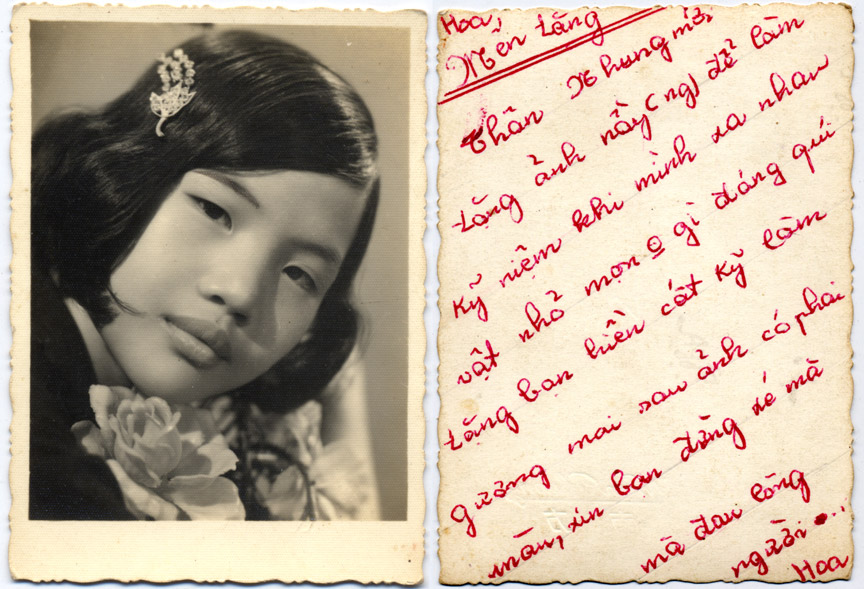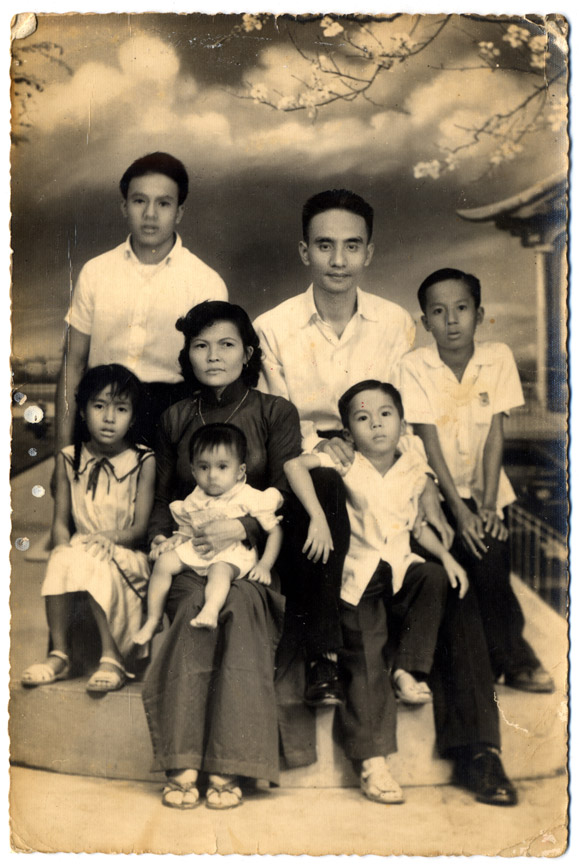Shows
Dinh Q. Le’s “Erasure”


At 10 Chancery Lane’s Chai Wan exhibition space, viewers have to use a timber pathway to navigate their way around a sea of photographs and the scattered parts of a small fishing boat. Only the glow from a video of a burning 19th century European vessel illuminates the gallery. Vietnamese artist Dinh Q. Lê’s “Erasure" is an interactive sculptural exhibition, co-curated by Zoe Butt and the Sherman Contemporary Art Foundation (SCAF). Commissioned by SCAF, it will be on display until July 30.
Visitors to the exhibition are encouraged to sift through and comment on the abandoned photographs Lê spent years collecting from second hand shops in Ho Chi Minh City. The photographs form a metaphorical ocean of memory, on which the wreckage of a small fishing boat floats like a ghost. The vessel refers to the many “boat people” in recent decades who have embarked on nightmarish journies to find refuge across the ocean; and more specifically, to the tragic December 15, 2010 sinking of a fishing boat carrying some 90 asylum seekers, many from Iraq, Iran and Afghanistan, off the coast of Christmas Island (an Australian territory in the Indian Ocean, in fact closer to Indonesia). The video of the European ship reminds visitors that before the migration of refugees and exiles from countries currently suffering from internal violence, Australia was colonized by European “boat people,” many no doubt as fearful for their safety and uncertain about their futures as those now braving the journey from Vietnam and elsewhere to Australian shores.

Here memory is visualized as both personal and universal, something capable of being captured within a photographic frame; and as an intangible human experience. By interacting with the scattered images, which depict individual and family portraits, visitors revive personal moments in the lives of strangers. A box at the entrace of the gallery holds several of these images, each with an attached Post-it note, carrying a comment. On a photograph of a party, one visitor earnestly left a message asking “What was this party for?", accompanied by a personal e-mail address, ready to receive a response. The entire collection of these oan hon (“lost souls”) will be catalogued and uploaded onto Erasure Archive, allowing visitors to browse the photographs and perhaps, for some, to recognize the faces of family or friends.
The photographic memories in “Erasure” belong to specific people, but the exile experience is shared by many, including the artist himself. Lê was born in Vietnam in 1968, and emigrated with his family to Los Angeles in 1979, after fighting broke out between the Vietnamese and the Khmer Rouge near Ha Tien, at the Cambodian border. Lê associates his personal history with the histories of those photographed, whom he has come to call his “surrogate family.”

The artist's affinity with asylum-seekers stands in stark contrast with many countries’ views on refugees. Often, by labeling refugees as “others” they remove the possibility of identifying with asylum seekers, replacing it with ambivalent distance or suspicion. “Erasure” was first exhibited at SCAF in Sydney, in July 2011, just as Australia was re-evaluating its refugee policy. The opening took place a month after the local television network SBS aired a three-part documentary titled Go Back Where You Came From, which follows six Australians on their 25-day journey to experience what refugees and asylum-seekers face when forced to relocate. The show is also relevant in Hong Kong, which has its own history of accomodating refugees. On May 4, 1975, the first wave of approximately 3,740 Vietnamese asylum-seekers, traveling on the Danish freighter Clara Mærsk, arrived on what was then a British colony. Though they were declared “illegal immigrants,” Hong Kong soon became a viable option for those seeking safe haven, largely because refugees were given the right to work shortly after arriving. Hong Kong’s first jail, Victoria Prison, the walls of which face 10 Chancery Lane Gallery’s main space, in Central, eventually became a transit and repatriation point for Vietnamese refugees.
“Erasure” weaves history into memory and location, poetically yet critically questioning methods of remembrance. By directly involving audiences in the act of recollection, Lê expands on society’s perceived role in documenting events and archiving information.







